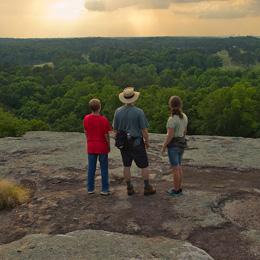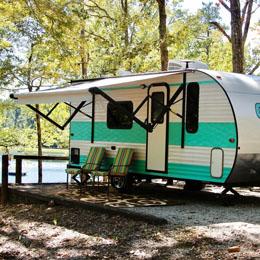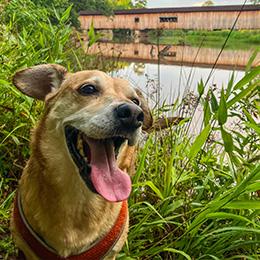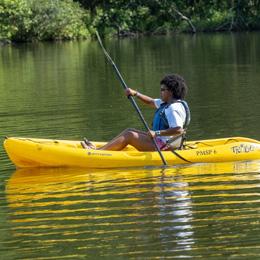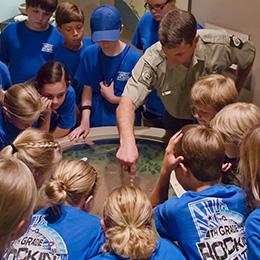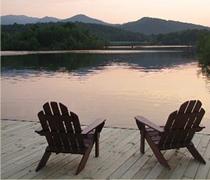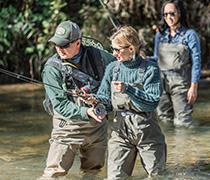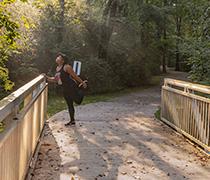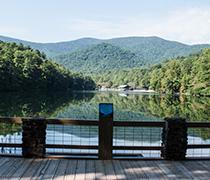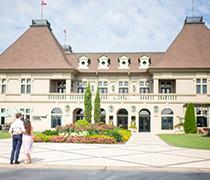
Terry W. Johnson
For most of us, Dec. 21 came and went without much fanfare; it was simply just another day. However, in the grand scheme of things, it was very important because it was the shortest day of the year and marked the end of fall and the onset of winter.
I must admit I don't look forward to winter. During this the harshest time of the year temperatures plummet, many of the birds of summer have long since departed for points south, the limbs of many of our hardwood trees stand naked against the skyline, the last of the flowers have withered, and the bright colors of fall have disappeared.
Some say that winter is the nighttime of the year, a time when the natural world is asleep. It is easy to see why people believe this old saying is true. However, when I go out into my backyard on a winter day and pause for a few moments, what I hear and see tell me that this adage is far from the truth. While I must admit that my yard is not as beautiful and full of life as it is in spring, summer or fall, it is definitely not sleeping.
From the dense shrubs that border my property, I often hear the beautiful song of the white-throated sparrow. This large sparrow nests in the far reaches of North America and winters throughout all but the extreme northern portions of the U.S. Its song is arguably the sweetest bird song that we Georgians are likely to hear during the winter. Some say the bird seems to be saying, “Pure sweet Canada, Canada, Canada." However, others are convinced it is repeating the phrase, "Old Sam Peabody, Peabody, Peabody."
Another bird I routinely hear calling is often called the joree. For most of my life, this familiar, striking backyard bird went by the name rufous-sided towhee. Nowadays its official name is eastern towhee.
Locally it is a permanent resident. As such, I hear the bird calling throughout the year. I know that you have heard it, too. Its distinctive call sounds to most folks like the bird is singing, "Drink your tea." At times the bird shortens its call to simply, "Drink tea."
These are but two of the birds that inhabit my backyard in winter. On any given day, chances are excellent that I will hear or see a parade of other birds, such as cardinals, tufted titmice, brown-headed nuthatches, mockingbirds, red-bellied and downy woodpeckers, and of course the most abundant bird of all, the chipping sparrow. From time to time, my yard is also visited by ruby-crowned kinglets, song and fox sparrows, bluebirds, yellow-rumped warblers, cedar waxwings and others.
Other kinds of wildlife can also often spotted. Much to my chagrin, gray squirrels are common backyard residents. During warm winter days chipmunks will awaken from their winter slumber to race across the yard. When the temperature climbs green anoles also emerge and bask in the sun.
On these rare, balmy winter days, a handful of butterflies can sometimes be seen fluttering across the yard. Cloudless sulphurs and sleepy oranges are by far the most often seen. Others that make rare appearances are mourning cloaks, common buckeyes and question marks. However, as soon as temperatures plummet, they disappear as quickly as the appeared.
This abundance of life is drawn to my yard because I provide them with three important necessities of life – food, water and cover. Without them, all that I could expect to see in my backyard are those birds and other animals that just happen to pass over or through my domain en route to someplace more hospitable.
Here are a few simply ways that you can transform a sleeping yard into a place full of life during even the harshest winter.
Begin by offering your wild neighbors cover. Cover can take the form of a brush pile, tree cavity, nesting box or thick evergreen trees or shrubs. Wild animals will use these as roosting sites to escape the cold during long, cold winter nights, as well as bad weather and predators.
Furnish food by planting seed- and fruit-bearing trees and shrubs. Those plants that retain the seeds and berries well into winter are particularly valuable.
Letting flowers go to seed and left standing can also supply birds with much-needed food. In addition, leaving dry leaves on the ground beneath shrubs and other plants offer birds with places to forage for food and critical overwintering habitat for butterflies.
Of course, a dependable source of supplemental food is the easiest way to provide food to birds throughout the winter. It is always best to offer backyard diners black oil sunflower and white millet seed.
However, if you feed your feathery neighbors mixed bird seed, select brands that have low percentages of wheat, sorghum (milo) and cracked corn. Adding a suet cake to the menu will attract birds that don't eat seeds. Also consider putting out grape jelly, which might lure a yellow-bellied sapsucker or Baltimore oriole.
Whatever you do, don't forget water. Birds need to drink and bathe regularly. Remarkably birds will bathe even on the coldest days. With that in mind, keep a bird bath full of clean water all winter long.
If you follow these suggestions, you will never again say that your backyard slumbers in winter. In addition, you will quickly discover the enjoyment that comes from watching the coming and going of wildlife … even on the bleakest winter days when you had rather not step outside your backdoor.
Terry W. Johnson is a former Nongame program manager with the Wildlife Resources Division, a backyard wildlife expert, and executive director of TERN, the friends group of the Nongame Conservation Section. (Permission is required to reprint this column. Email rick.lavender@dnr.ga.gov.) Learn more about TERN, The Environmental Resources Network, at http://tern.homestead.com.
“Out My Backdoor” columns archive.
 An official website of the State of Georgia.
An official website of the State of Georgia.
















